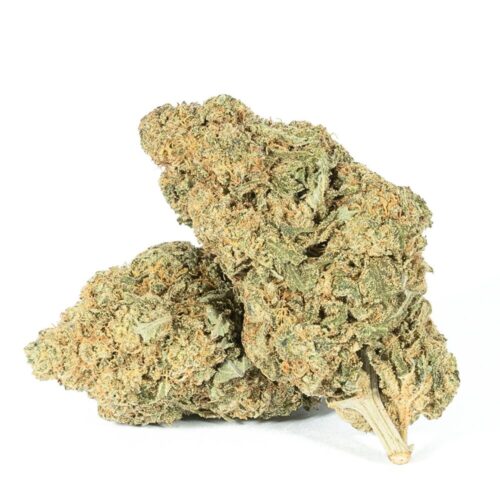When you embark on the journey of cultivating cannabis, one of the most crucial steps is learning how to sex cannabis plants. Understanding the differences between male and female plants is essential, especially if your goal is to harvest high-quality flowers. This introduction aims to clear up any confusion surrounding plant sexing and provide you with the foundational knowledge needed to successfully differentiate between the two. By recognizing the unique characteristics of each sex, you’ll enhance your cultivation skills and increase your chances of a fruitful yield.
In this article, we’ll explore:
- The importance of sexing cannabis plants for achieving optimal flower quality and successful cultivation.
- Key characteristics that differentiate male and female, including specific visual indicators.
- Strategies and tips for effectively identifying the sex of your plants early in the growing process to maximize your harvest.
Why It Matters
Ensuring Flower Production
The main reason to sex cannabis plants is to ensure you get flowers. Female plants produce the coveted buds that growers love, while males do not. By identifying and removing male plants early, you can focus your resources on the females.
Preventing Pollination
If you leave male plants in your garden, they can pollinate the females. This leads to seed production rather than flower production. Seeds in your buds can reduce the quality and potency of your cannabis.
Maximizing Yield
By removing males early, you give your female plants more space, light, and nutrients. This helps them grow bigger and produce more flowers.
When to Start Checking Your Plants
Pre-Flower Stage
The best time to start sexing your plants is during the pre-flower stage. This usually occurs when the plants are around four to six weeks old. Look closely at the nodes, where the leaves meet the stem.
Early Signs
Early signs of sex can be subtle. You’ll need to observe carefully to spot the differences. Being attentive during this stage is crucial for successful identification.
Frequency of Checks
Check your plants regularly, at least once a week. Frequent checks increase your chances of spotting the signs early, giving you more time to act.
Tools You’ll Need
Magnifying Glass
A magnifying glass can help you see the tiny details that differentiate male and female plants.
Good Lighting
Good lighting is essential for spotting the small signs. Natural sunlight works best, but a strong LED light can also do the trick.
Notebook for Observations
Keeping a notebook can help you track your observations. Note down any signs you see and compare them over time.
Identifying Male Cannabis Plants
Appearance of Pollen Sacs
Male plants produce small, round pollen sacs. These sacs look like tiny balls and usually appear at the nodes.
Structure and Size
Males tend to grow taller and have fewer leaves compared to females. Their structure is more spindly and less bushy.
Time of Appearance
Pollen sacs typically appear earlier than female flowers, sometimes as early as three weeks into the growth cycle.
Identifying Female Cannabis Plants
Appearance of Pistils
Female plants produce pistils, which look like tiny white hairs. These usually appear at the nodes and grow out of small, tear-shaped structures.
Structure and Size
Females are generally shorter and bushier than males. They have more leaves and a denser structure, which helps support flower production.
Time of Appearance
Pistils usually appear a bit later than pollen sacs, around four to six weeks into the growth cycle.
Hermaphrodite Plants
What Are Hermaphrodites?
Sometimes, a cannabis plant can develop both male and female characteristics. These are called hermaphrodites. They can pollinate themselves and other plants, leading to seed production.
Identifying Hermaphrodites
Look for both pollen sacs and pistils on the same plant. If you spot both, it’s likely a hermaphrodite.
Managing Hermaphrodites
Remove hermaphrodites immediately to prevent them from pollinating your female plants. They can be just as disruptive as male plants.
Techniques for Early Identification
Cloning for Early Sexing
One way to identify the sex of your plants early is by cloning. Take a cutting from each plant and label them. Place the cuttings in a 12-hour light cycle to force them to show their sex.
Using Feminized Seeds
Feminized seeds are bred to produce only female plants. This eliminates the need to sex your plants altogether, making the process much easier.
Genetic Testing
For those who want a guaranteed method, genetic testing is available. Send a small leaf sample to a lab, and they’ll tell you the plant’s sex. This method is accurate but can be costly.
Common Mistakes to Avoid
Ignoring Early Signs
Ignoring the early signs of sex can lead to pollination and seed production, ruining your crop. Always be vigilant.
Confusing Male and Female Signs
Beginners often confuse the early signs of male and female plants. Take your time to study the differences and make sure you correctly identify them.
Neglecting Regular Checks
Skipping regular checks can lead to missed signs. Regularly observe your plants to catch any changes as soon as they happen.
Benefits of Early Sexing
Resource Allocation
By identifying and removing males early, you can allocate your resources more effectively. This ensures that your female plants get all the nutrients, light, and space they need to thrive.
Improved Plant Health
Removing males reduces competition, which can lead to healthier, more robust female plants. This improves overall plant health and increases your chances of a successful harvest.
Increased Yield
Focusing on female plants maximizes your yield. The more females you have, the more flowers you can harvest.
Challenges in Sexing
Similar Early Signs
The early signs of male and female plants can be similar, making it challenging to differentiate them. This requires careful observation and sometimes even a bit of luck.
Environmental Factors
Environmental factors like light, temperature, and nutrients can affect the growth and development of your plants. These factors can sometimes mask or alter the early signs of sex, adding another layer of complexity to the process.
Learning Curve
There’s a learning curve involved. It takes time and practice to become proficient. Don’t get discouraged if you make mistakes initially; it’s all part of the learning process.
Tips for Success
Start with Quality Seeds
Starting with high-quality seeds can make the entire process easier. Look for reputable seed banks that offer feminized seeds to reduce the chances of ending up with male plants.
Maintain Optimal Growing Conditions
Keep your growing environment stable and optimal. Proper lighting, temperature, and nutrients are crucial for healthy plant development and can make identifying sex easier.
Educate Yourself
Knowledge is power. Read books, watch videos, and join online forums to learn from experienced growers. The more you know, the better equipped you’ll be to identify and manage your plants.
Conclusion
Identifying the sex of your cannabis plants early is crucial for a successful harvest. By following the steps outlined in this guide, you can ensure that your garden is filled with healthy, productive female plants. Remember to check your plants regularly, use the right tools, and educate yourself continuously. With time and practice, you’ll become proficient in sexing your plants, maximizing your yield and enjoyment.



